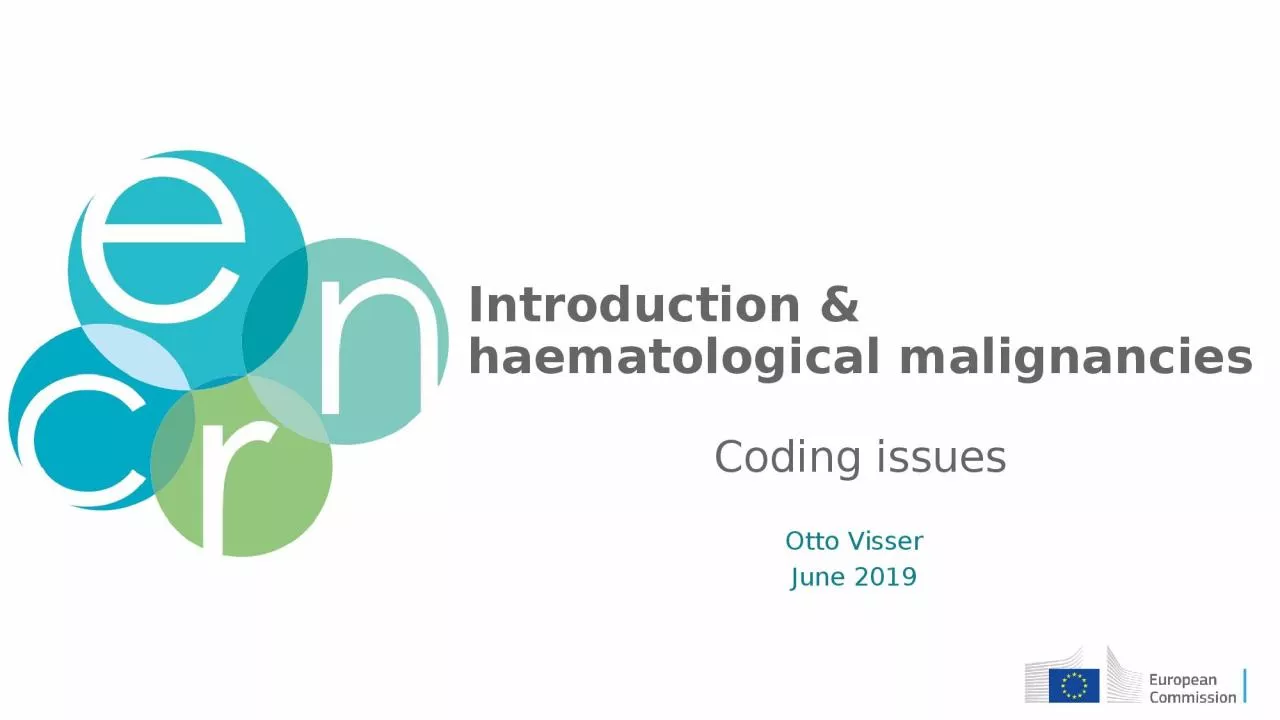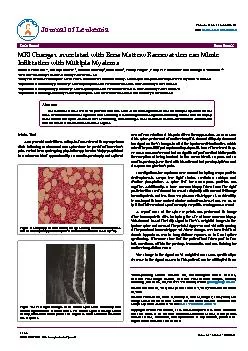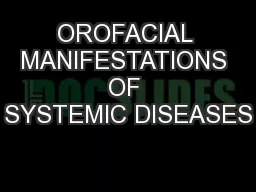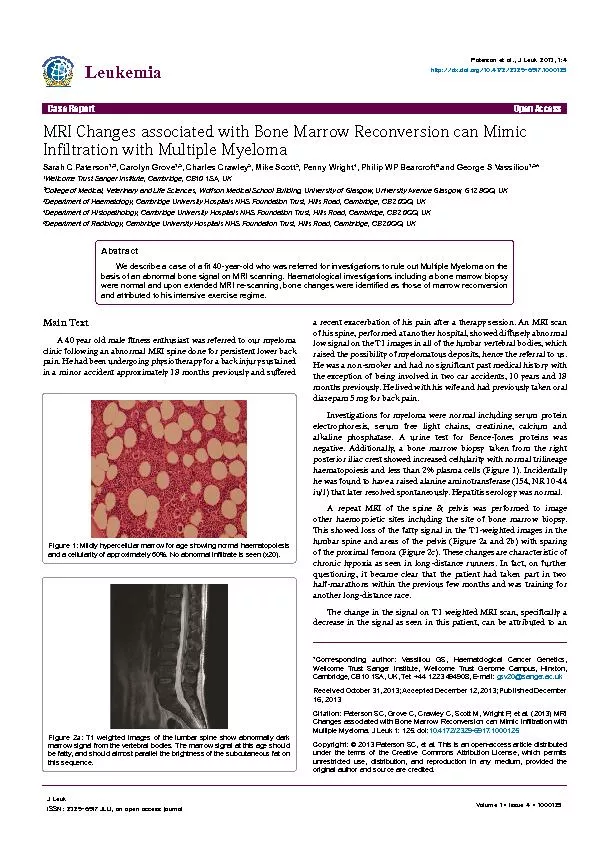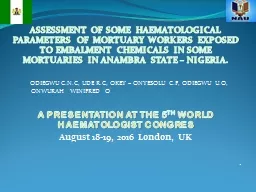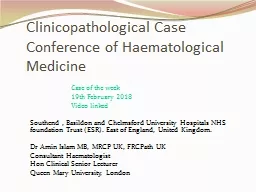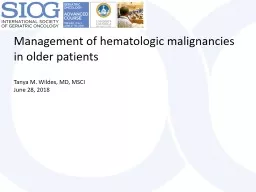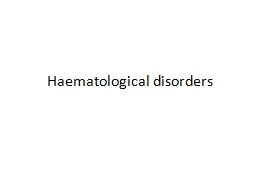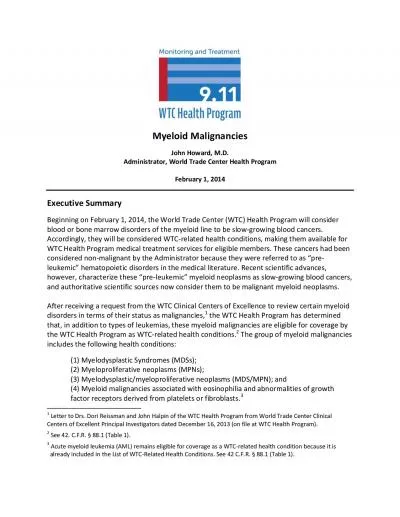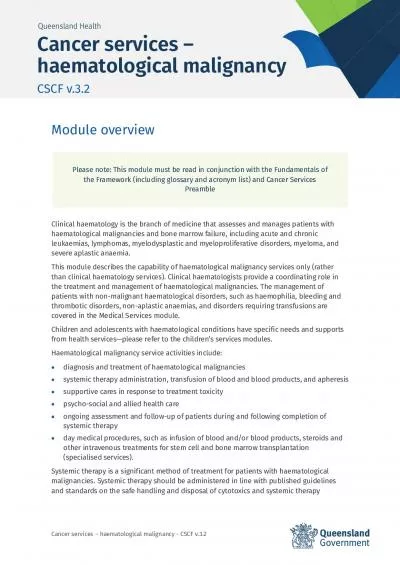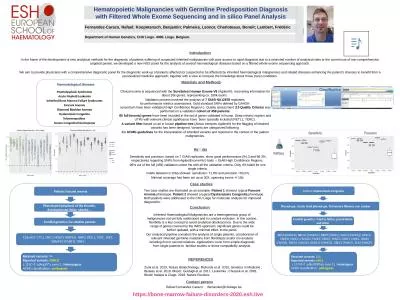PPT-Introduction & haematological malignancies
Author : winnie | Published Date : 2024-01-29
Otto Visser June 2019 Coding issues Introduction For most solid cancers the primary site of the most important factor for the prognosis and the choice of treatment
Presentation Embed Code
Download Presentation
Download Presentation The PPT/PDF document "Introduction & haematological malign..." is the property of its rightful owner. Permission is granted to download and print the materials on this website for personal, non-commercial use only, and to display it on your personal computer provided you do not modify the materials and that you retain all copyright notices contained in the materials. By downloading content from our website, you accept the terms of this agreement.
Introduction & haematological malignancies: Transcript
Download Rules Of Document
"Introduction & haematological malignancies"The content belongs to its owner. You may download and print it for personal use, without modification, and keep all copyright notices. By downloading, you agree to these terms.
Related Documents

